How To Remove Free Spinning Spark Plugs
How to remove spark plugs
All-time style to remove spark plugs
If you've never inverse spark plugs before, this post provides actually of import data on the all-time manner to remove spark plugs to help you avoid the most common DIYer mistakes. I'll cover everything from "spark plug hygiene" to how to gap spark plug and how to bargain remove stuck spark plugs.
Get the correct spark plug tools
You'll need a spark plug socket to remove spark plugs and supersede them
A spark plug socket is actually just a socket that's deep enough to slide over the entire tip and porcelain area and even so engage with the hex portion of the shell. In add-on to the added depth, most spark plug sockets too include a rubber insert that keeps the socket centered over the plug, preventing the socket from twisting and breaking off the porcelain department. Even so, some spark plug sockets comprise a magnet that does the centering and helps elevator the spark plug out of the hole in one case information technology's unthreaded.

Spark plug socket and insert
Spark plug socket sizes
thirteen/16" and 5/8" are the two near mutual sizes for older automotive and outdoor power equipment engines. However, the newer engines require small spark plugs.
• 14mm for the latest European and Asian vehicle and motorcycles
• 12pt thin-walled for many late model BMWs
• 9/xvi″ for some Ford engines
• five/eight″ or 16mm for newer vehicles (GMC, Nissan, Chevy, Subaru), small-scale engines (Briggs & Stratton, Koehler)
• 11/sixteen″ Older BMW
• 18mm Motorcycles and some modest engines
• 3/4″ Lawnmowers, pocket-size engines, older GM vehicles
• 13/16″ Older vehicles (large engines.
• 7/8″ Tractors, older vehicles, aviation
6 point versus 12 point spark plug sockets
Spark plug sockets are available in six-betoken and 12-point versions. Both piece of work well on new and slightly used spark plugs. However, if y'all're trying to remove a rusted spark plug, a 12-point socket is more likely to strip off the rusted corners of the spark plug.
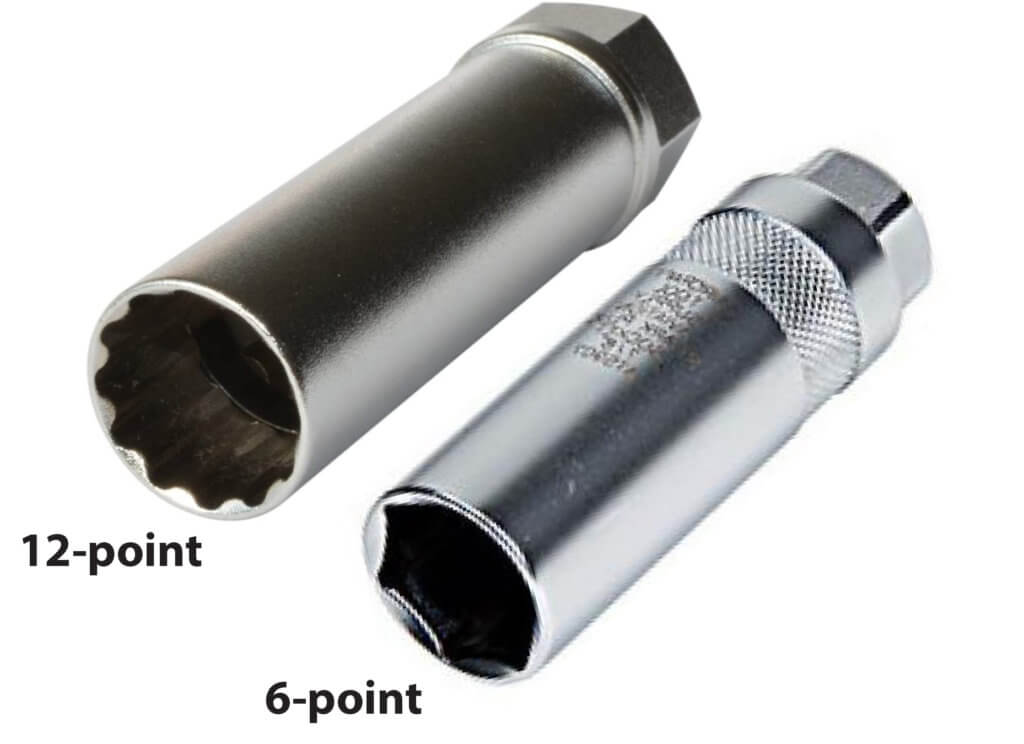
Specialty spark plug sockets
You lot'll often exist working in tight quarters and that's where flex and extra deep sockets come in handy. The trouble with tight quarters isn't so much in inserting the socket into the engine as much as removing the socket and plug. For example; many overhead cam engines have spark plugs cached deep into the cylinder head. You can utilise a directly socket and an extension to attain into the spark plug tube, but equally you lot try to remove the plug, the extension often disengages from the socket. That's where a single extra deep socket comes in handy because it eliminates "angling" the smaller socket and plug from the spark plug tube.
A spark plug socket with an integral flex joint also comes in handy for utilise in tight spots.
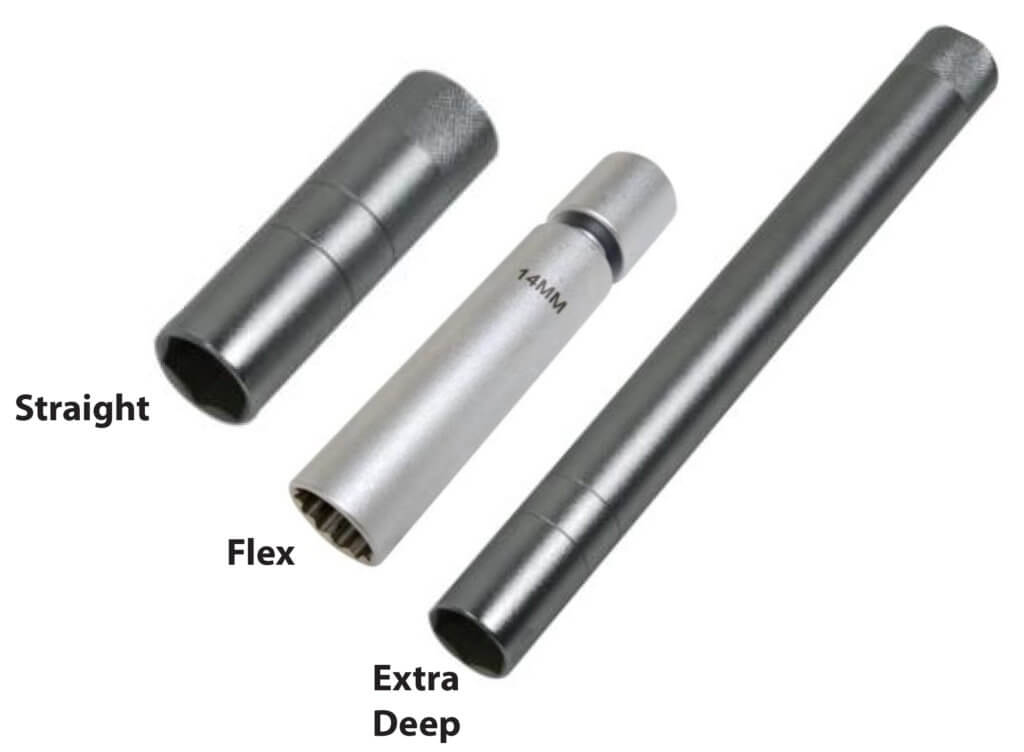
Directly, flex and extra deep spark plug sockets
You lot'll need a good ratchet to remove spark plugs and supplant them
You lot'll demand extra leverage to remove spark plugs buried deep in the engine compartment. A bent handle with an integral flex caput is the best tool for the task. It's longer than a normal ratchet and the flex head allows you to maintain the leverage while nonetheless fitting into tight places
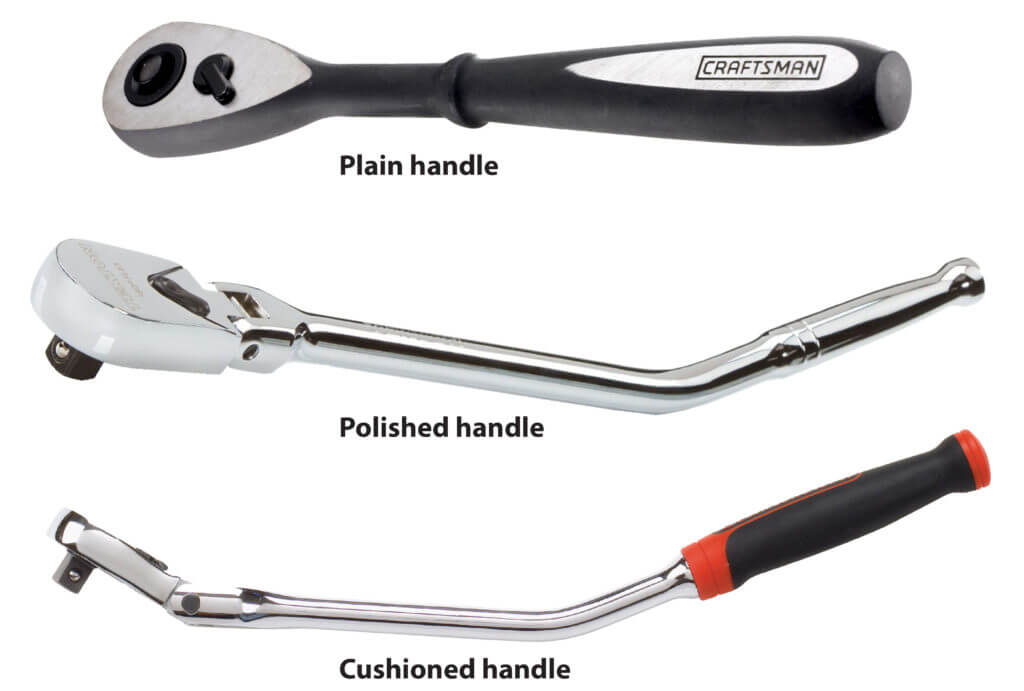
Ratchet handle types
You'll need a wire spark plug gap judge to check spark plug gap
In that location are two types of gap gauges; wire and tapered. The tapered gap gauge seems easier to utilise since you just slide the tapered edge between the center electrode and the side electrode and forcefulness the gap open using the tapered border. That blueprint worked well on older copper spark plugs. Only it doesn't work well on newer platinum and iridium-tipped spark plugs. On those plugs the precious metal is welded to the tip and the tapered estimate can literally pause the tip off the eye electrode. If you lot own a tapered judge, throw it out. Always use a wire gap gauge.
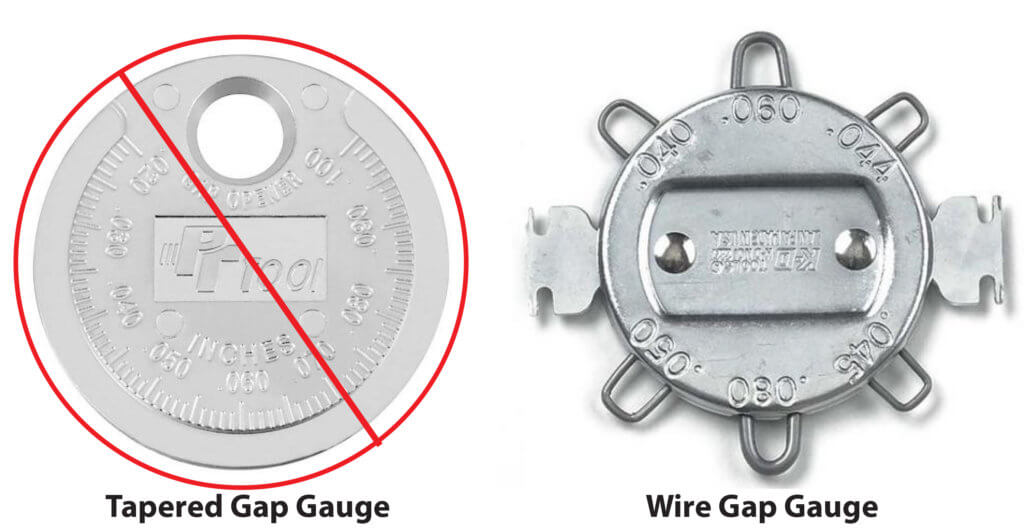
You'll need dielectric Tune-Up Grease to replace spark plugs
Dielectric grease is an insulator and a lubricant. Apply it to the inside of the spark plug boot or coil boot to prevent the high voltage from firing down the side of the spark plug. As an added bonus, the dielectric grease prevents the boot from welding itself to the porcelain, making it much easier to remove the boot at the adjacent spark plug change.
Squirt a small dollop of the dielectric grease into the spark plug boot and spread it around the inside of the kick with the tip of a clean Philips screwdriver.
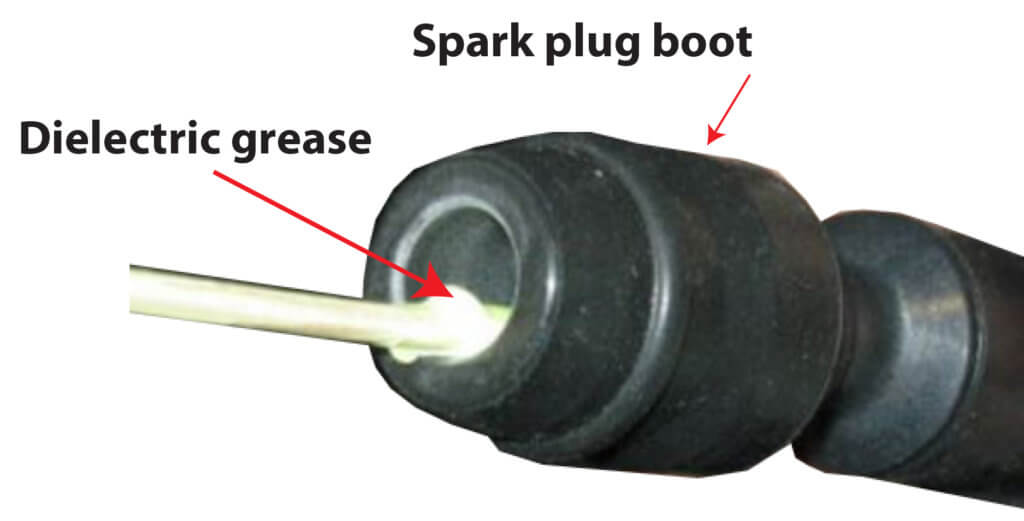
Don't use anti-seize on spark plug threads
When long-life spark plugs were offset introduced, spark plug manufacturers recommended applying a light coat of anti-seize chemical compound to the spark plug threads to prevent them from seizing in the cylinder head. That recommendation is now obsolete! Modern spark plugs come from the mill with a nickel plating to forbid seizing in the cylinder head. If you apply anti-seize on top of that coating, chances are you'll over-torque the spark plug and misconstrue the metal trounce, causing the spark plug to leak and misfire. Do Not apply anti-seize to a spark plug unless specifically recommended by the plug manufacturer!
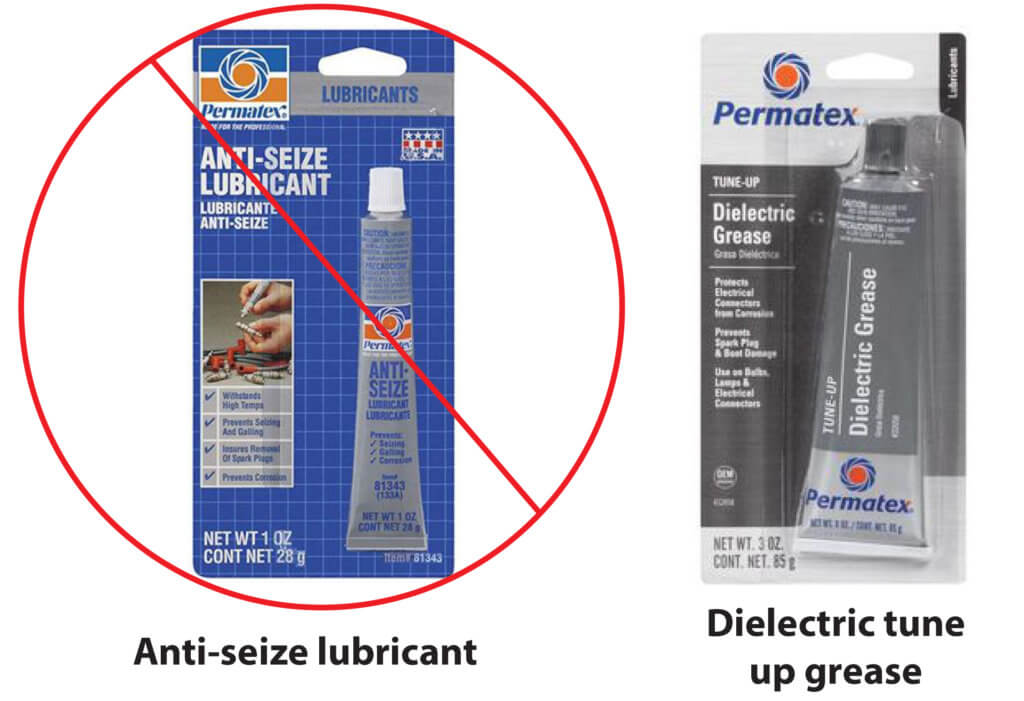
Y'all'll demand a torque wrench to replace spark plugs
Engine manufacturers have ever listed a torque spec for spark plug, only nobody always used a torque wrench. But that was back in the days when all cylinder head were fabricated out of bandage iron. Today they're generally aluminum alloys. If you over-tighten or nether tighten a spark plug in an aluminum head, you can damage the threads in the cylinder head, or suspension the speak plug seal betwixt the metallic shell and the porcelain. I'm not kidding most this, you tin do serious engine harm costing hundreds of dollars by improper spark plug torque.
And so, use a torque wrench OR use the tightening charts provided by the spark plug articles.
The recommended spark plug torque is based on the type of plug seat; gasket or tapered, cylinder head material, and size of the plug. Here's a nautical chart from NGK.

If you don't have a torque wrench, follow this guide from spark plug manufacturer AUTOLITE for how to tighten by paw.
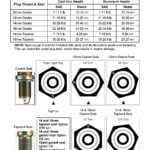
Click on image to view PDF
Proper engine temperature for spark plug removal
Carmakers e'er recommend removing and replacing spark plugs when the engine is Cold. That way, the spark plugs, and spark plug threads have the least corporeality of thermal expansion, then removing spark plugs is easier and there'due south less run a risk of damaging the spark plug threads.
If y'all remove spark plugs from a hot engine with an aluminum cylinder head, you risk tearing the threads out of the head.
Clean the spark plug surface area before removing the plug
Whether yous're working on a car or truck engine or a small engine in your lawnmower, always clean effectually the spark plug hole before you begin removing the spark plug. That prevents debris from falling into the cylinder once the spark plug is out. And, it allows the new spark plug to starting time threading smoothly.
Accident the crud out of the area with compressed air before loosening the spark plug.
1) Remove the spark plug cable or coil pack
2) Loosen the spark plug with the proper socket
3) If the plug doesn't budge, DON'T apply brute forcefulness. You lot'll break the plug. Follow this procedure:
- Apply a liberal spray of rust penetrant (WD-40 is a general purpose lubricant. It is NOT a rust penetrant. Use a existent rust penetrant like Pb Blaster, Liquid Wrench, or OR WD-forty Specialist Rust Penetrant.)
- Allow it to soak for 30 minutes. And then try to remove. If you lot tin can get it to budge, Stop and apply more rust penetrant. Permit it soak for 30 minutes. So tighten the plug to piece of work the penetrant back into the threads. Continue spraying, unscrewing/tightening until the plug comes out.
Install the new plug, following the torque guides in a higher place. Do NOT apply anti-seize to the spark plug threads unless specifically directed by the spark plug manufacturer.
©, 2021 Rick Muscoplat
Posted on by Rick MuscoplatSource: https://ricksfreeautorepairadvice.com/how-to-remove-spark-plugs/

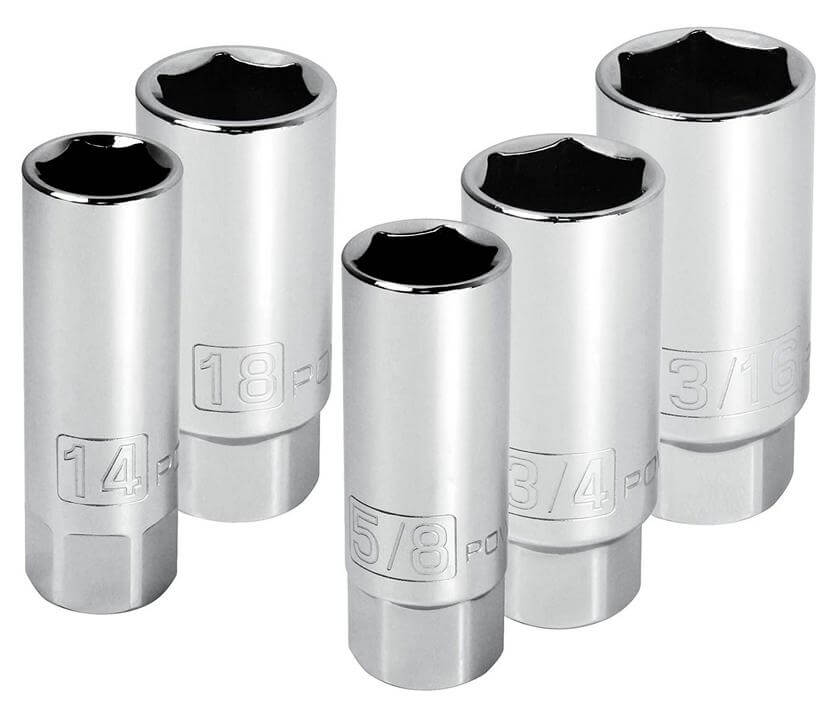
0 Response to "How To Remove Free Spinning Spark Plugs"
Post a Comment